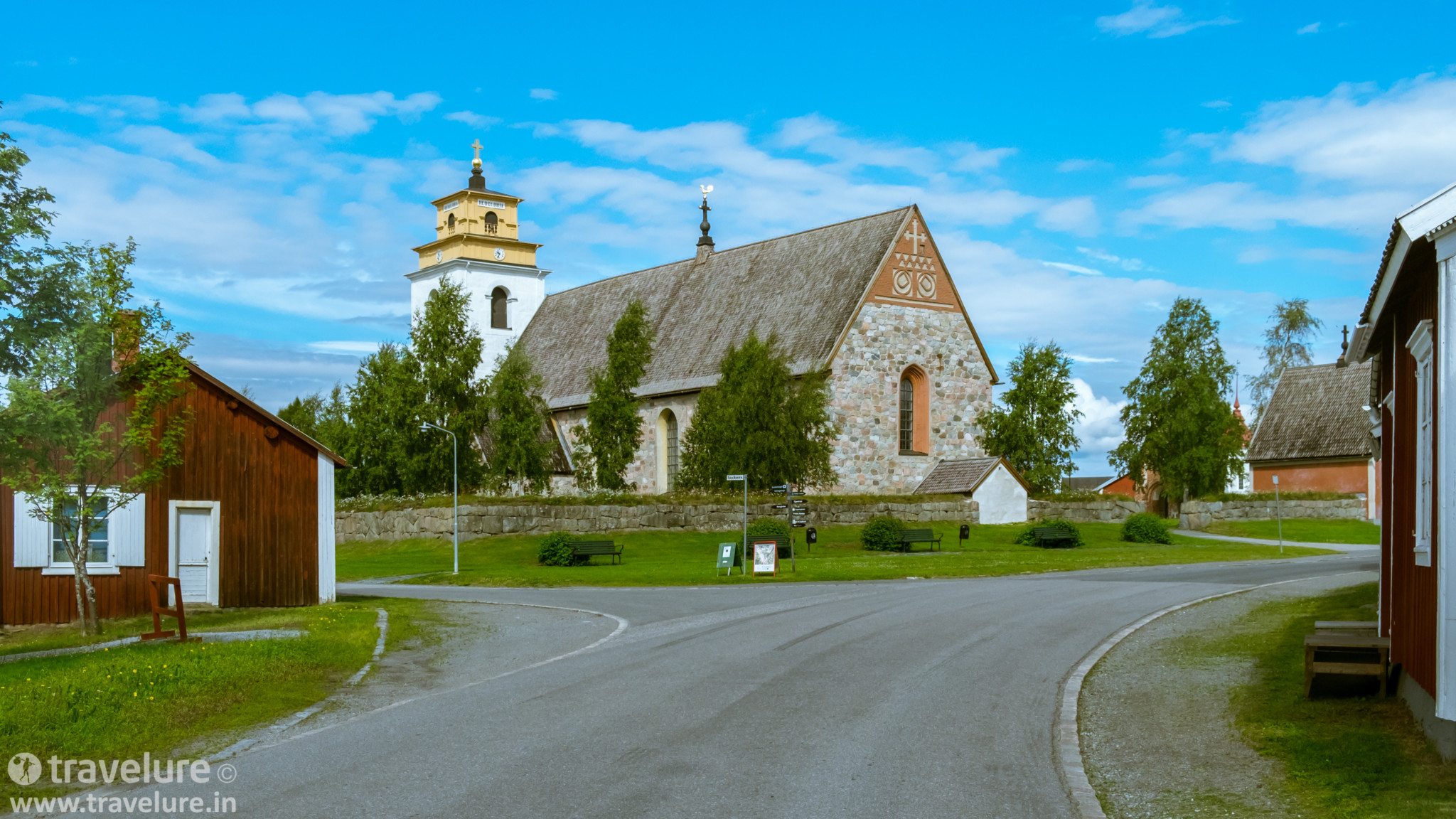Soon, we will all be celebrating the onset of 2017. Before 2016 bids goodbye, I have another milestone to celebrate – I am scoring a century! Yes, that’s right. This is my hundredth post. I wanted it to be a landmark in more ways than one. Hence, I decided this post would be about the UNESCO World Heritage Sites I visited during 2016. Coincidentally, there are 16 of these!
Instead of keeping this post chronological, I am going to mix it up a bit! Some of these UNESCO sites may seem inane, but each is loaded with solid reasons for inscription. I’ll be going over those too. So, let me start the sharing.
By the way, when I shared this idea with Amit Dixit (Editor, Outlook Traveller), he asked me to contribute a similar photo feature (Photo Essay World Heritage Sites: Heritage Unplugged) with 16 UNESCO Sites as their June 2017 issue was their 16th Anniversary issue.

#1. Golden Temple or Cave Temple, Dambulla, Sri Lanka
It lies around 150km East of Colombo, in central Sri Lanka. While the distance isn’t much, it can take you around 4 hours to reach here from Colombo.
While there are many caves sprinkled around the area, most travellers visit the 5 significant adjoining caves in the temple complex. The entire complex is still functional as a Buddhist Temple though it dates back to between 3rd century BCE and 18th century CE. Extremely well preserved, it was inscribed as a UNESCO site in 1991.

#2. Qutub Minar, New Delhi, India
This 73-metre tall minaret is the tallest brick minaret in the world. It was commissioned in early 13th century by Qutb-al-Din Aibak and was completed by his successor, Iltutmish. Along with the other monuments in the Mehrauli Archeological Park, Qutub Minar has been inscribed as a UNESCO World Heritage Site.
You may wonder why I talk of Qutub Minar – a monument near my home. Well, I know of many people who live in Delhi but have never visited some of the monuments here. So, no harm sharing about my visit here during this year!

#3. Church Town of Gammelstad, Luleå, Sweden
Stone church of Gammelstad was built by Sweden in 1492 as the first move to lay lien on the territory, as borders were not well defined in those days. A church town came about around this church.
Here, people would build cottages and would use them for stay during their big feast pilgrimage. Though privately owned, these cottages were not meant for permanent residence. These had no water supply, no heating facility, and no cooking arrangements. All that was and still is taboo as these cottages were meant for a Spartan stay during the pilgrimage. And that is what defined a church town. As it stayed true to the initial intent, the church town of Gammelstad has earned a UNESCO World Heritage site inscription in 1996.

#4. Anuradhapura, Sri Lanka
Considered to be the first capital of Sri Lanka (from 4th century CE to 11 century CE), Anuradhapura lies 205 km northeast of Colombo. This distance may take up to 6 hours by road.
The excavated ruins consist of three types of structure – monastic buildings, Dagobas (bell shaped masonry), and pokunas (bathing tanks). The largest Dagoba (Ruwanwelisaya) is 1100 feet in circumference. It got inscribed as a UNESCO site in 1982.

#5. Canals of Amsterdam, The Netherlands
More than one hundred kilometres of canals, about 90 islands, and around 1,500 bridges are there in Amsterdam. The three main canals from the 17th century – Herengracht, Prinsengracht, and Keizersgracht – were dug during the Dutch Golden Age. These form concentric belts around the city, the Grachtengordel.
These canals are the keystone of Amsterdam’s exemplary city planning and were inscribed as UNESCO World Heritage site in 2010.

#6. Aapravasi Ghat, Mauritius
Aapravasi Ghat (Immigration Depot) or Coolie Ghat has earned its UNESCO inscription in 2006 for being the first port that received indentured labour, many of whom settled in Mauritius, while the others made their way to the plantations across the British empire.

#7. San Agustin Church, Manila, Philippines
San Agustin Church is one of the four Baroque Churches of Philippines that were inscribed as UNESCO World Heritage sites in 1993.
The church building does not only seem imposing and indestructible, it truly is. It has withstood repeated calamitous damage at the hands of raging fires, enemy attacks, and high-intensity earthquakes.
Its flat ceiling has been painted in a magical way to give an illusion of 3D bass relief work, just like what you see in the Gallery of Maps (Sistine Chapel), Vatican!

#8. Sanchi Stupa, Sanchi, India
This Buddhist monument is the oldest brick monument in the country. It was commissioned in 3rd century BCE by Emperor Ashoka and was built over the relics of Buddha.
It became a UNESCO World Heritage Site in 1989.

#9. Cultural Landscape of Bali Province
Volcanoes provide Bali with fertile soil. Combined with a wet tropical climate, that makes it an ideal location for crop cultivation. River water has been channelled into canals for irrigation. It allows the cultivation of rice on both flat land and mountain terraces.
Rice, water, and subak, (water-controlling cooperative social system) together have shaped the Bali landscape over the past thousand years. These are an integral part of Bali’s religious life too. As rice is seen as the gift of God, the subak system is considered part of Bali’s temple culture.
Together with their temples, five rice terraces of Bali covering an area of 19,500 hectares, became a UNESCO site in 2012.

#10. Polonnaruwa, Sri Lanka
After the decimation of Anuradhapura, Polonnaruwa became the second capital of Sri Lanka. The most illustrious king who reigned was Parakramabahu I. His reign is marked by a distinctly superior irrigation system as he was obsessed with not wasting even a drop of water that descended from heaven. It was inscribed as a UNESCO site in 1982. Even today, Polonnaruwa remains an important Buddhism pilgrimage site in the country.

#11. Kinderdijk, The Netherlands
When you are living 7 metres below sea level and you do not have gills, you need to keep the sea water out of your village. The residents of Kinderdijk, a settlement that is a 25-minute speedboat ride inland from Rotterdam, deployed an ingenious technique to pump seawater out – an elaborate arrangement of 19 windmills.
For more details, read ‘Windmills of Kinderdijk’
Though these windmills were commissioned in the mid-eighteenth century, they are still functional. They continue to fulfill the original purpose of keeping the land dry while providing 3-storeyed living quarters to the farmers who own them. A windmill-turned-museum gives you a glimpse into the local culture and lifestyle. This well-preserved traditional innovation has earned the windmills of Kinderdijk UNESCO World Heritage status in 1997.

#12. Singapore Botanic Gardens, Singapore
Created in 1859, the Singapore Botanic Gardens demonstrate the evolution a Pleasure Garden, to a colonial Economic Garden for research, to a world-class botanic garden that is both – a scientific institution and a place of conservation, recreation, and education. This site got inscribed as UNESCO World Heritage site in 2015. Incidentally, this is the only UNESCO site in Singapore.

#13. Capitol Complex, Chandigarh, India
In 2015, the architectural work of Le Corbusier got acknowledged by UNESCO as World Heritage, thanks to its outstanding contribution to the modern movement. This work is spread over 7 countries – Argentina, Belgium, France, Germany, India, Japan, and Switzerland. Chandigarh’s Capitol Complex is a part of this UNESCO listing. While the Secretariat building is a typical Le Corbusier structure, the Open Hand Monument is an abstract installation in the Capitol Complex that has been adopted by the Chandigarh Administration as the symbol of the city.

#14. Le Morne, Mauritius
These are two of the most recognisable spots in Mauritius! While Crystal Rock is just a fossilised coral reef, Le Morne Brabant got inscribed as a UNESCO World Heritage Site in 2008 for an unfortunate reason. This monolith was a hideout for slaves who would run away from their masters. When the Abolition of Slavery Act got passed in 1853, these masters went to Le Morne to give the good news to the slaves. The slaves misunderstood the intent. They jumped and committed suicide from this cliff!

#15. Galle Fort, Galle, Sri Lanka
Built in 1588 CE and further fortified extensively from 1649 CE onwards, the fort is a living, buzzing township with a multi-cultural population. The town planning of this habitation is typical of the Dutch (a sterling example being Amsterdam). It survived the notoriously devastating tsunami that hit 14 countries on 26th December 2004. It houses a few churches, one of which has been converted into a mosque after Muslim accession of the fort. Additionally, the fort has a clock tower and a lighthouse.

#16. Skogskyrkogården or Woodland Cemetery, Stockholm, Sweden
Few cemeteries across the globe can boast being UNESCO World Heritage sites. Skogskyrkogården is one of those. Interestingly, this cemetery got inscribed in UNESCO list because of its landmark architecture that influenced numerous cemeteries across the globe. It is a brilliant blend of terrain, vegetation, and purpose. Interred grave of Greta Garbo, the heartthrob of Hollywood in 1920s and 30s, is also here (she passed away in Manhattan).
Now, while visiting 16 of these heritage sites during the year was fascinating, here’s looking forward to 17 or more during 2017!



















Very nice blog! Awesomeness 🙂
Please visit my travel blog on : http://www.traveltolive.in
Thanks, Hitesh! Glad you liked it!
Wow, you visited all of those places? That seems like a dream come true for me. Travelling around the world is a dream I hope to accomplish. I would visit these places from my bucket list. It’s great that you were able to describe them in such detail. I hope you keep posting more about your travels.
That is quite a respectable number to be done in a year! I have done a few out of these. Great theme for the 100th post!
Thanks, Indrani! I wanted my 100th to count. Took a while to hit upon this idea! 🙂